Carstens Tönnieshof
Rare Brutalist Red and Black Vase - 7713-20 - Carstens Tönnieshof - c1970s
Rare Brutalist Red and Black Vase - 7713-20 - Carstens Tönnieshof - c1970s
Couldn't load pickup availability
This beautiful Carstens Form 7713-20 vase is an extraordinary example of Brutalist art pottery, combining striking form with rugged texture.
Crafted from red clay, its deeply etched surface creates a beautifully tactile, almost raw quality that makes this piece truly stand out. The design reflects the Brutalist movement's emphasis on raw, unrefined materials and sculptural forms. The heavily textured surface also nods to the Fat Lava style, a hallmark of 1960s West German pottery.
Carstens Tönnieshof, the maker of this vase, was a key player in mid-century ceramics, known for pushing the boundaries of modern design. Founded in the early 20th century, the company gained fame after World War II for its innovative designs, especially during the 1960s and 1970s. This vase, with its sculptural silhouette and rugged surface, is a testament to Carstens' exceptional craftsmanship and their role in the West German Pottery movement.
With its deeply etched design and earthy tones, this vase is a perfect embodiment of Brutalism, which aimed to highlight the beauty of raw, unpolished materials. In mint condition, it’s a true collector’s item and a bold statement piece that reflects both history and artistic innovation.
- Material: Unglazed Ceramic
- Model: 7713-20
- Style: Mid-Century Modern
- Technique: Hand-thrown
- Place of Origin: Germany
- Mark: W. Germany 7713-20, Tönnieshof Mark
- Date of Manufacture: 1970s
- Condition: Perfect condition
Dimension:
Height: 20 cm | 7.9 in
Diameter: 10 cm | 3.9 in
Weight: 0.8 kg
Share
- Worldwide Shipping
- Secure Packaging
- Loving Curation
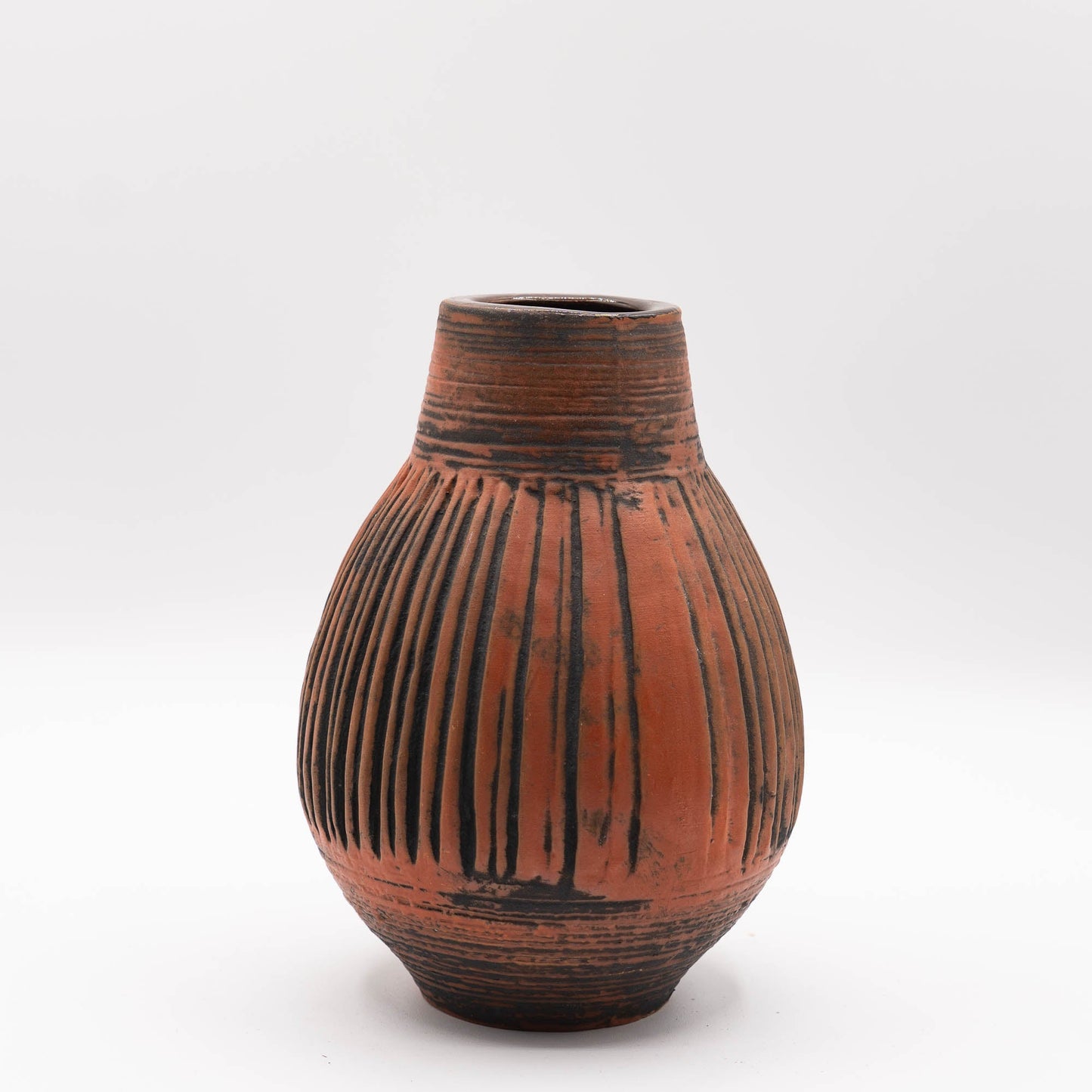
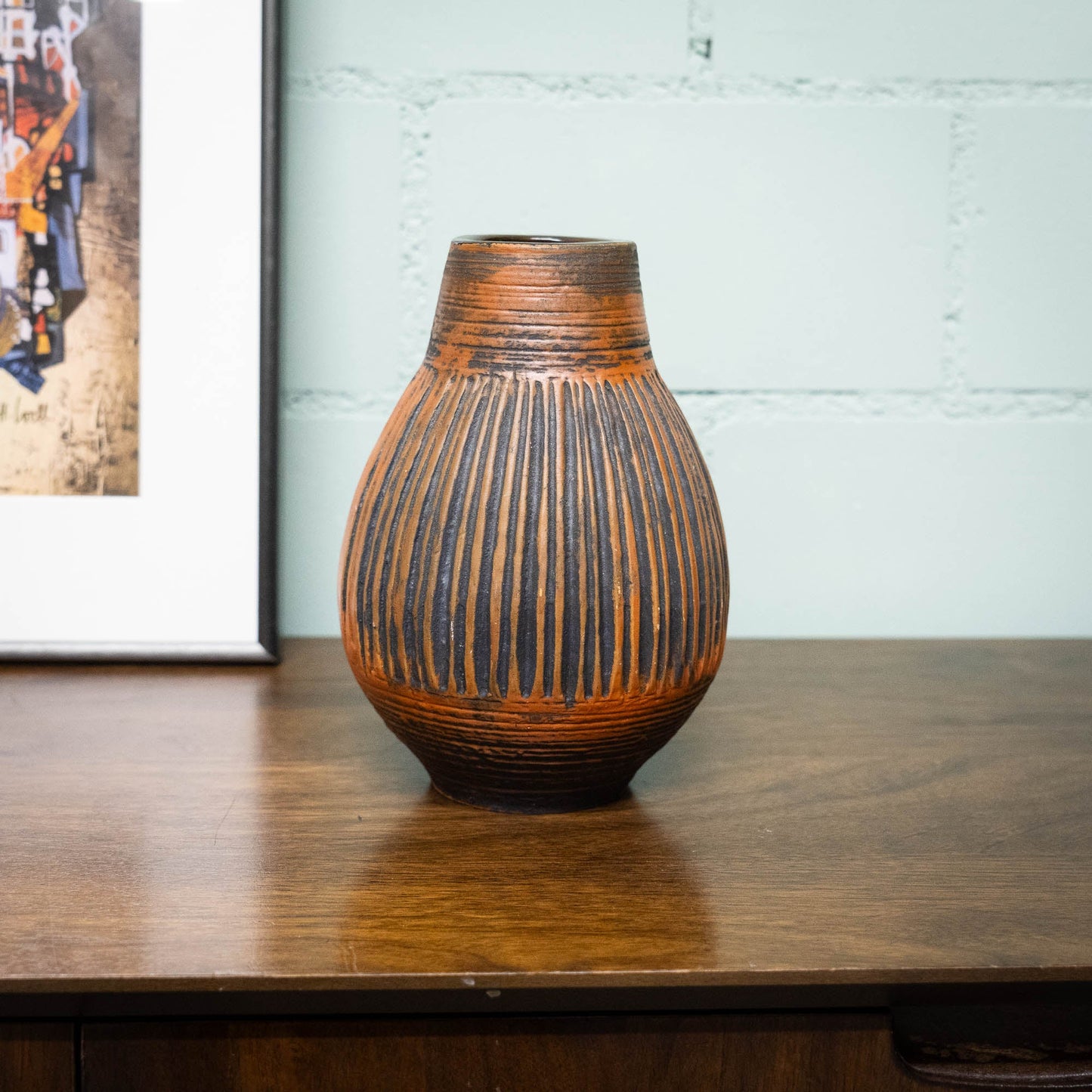
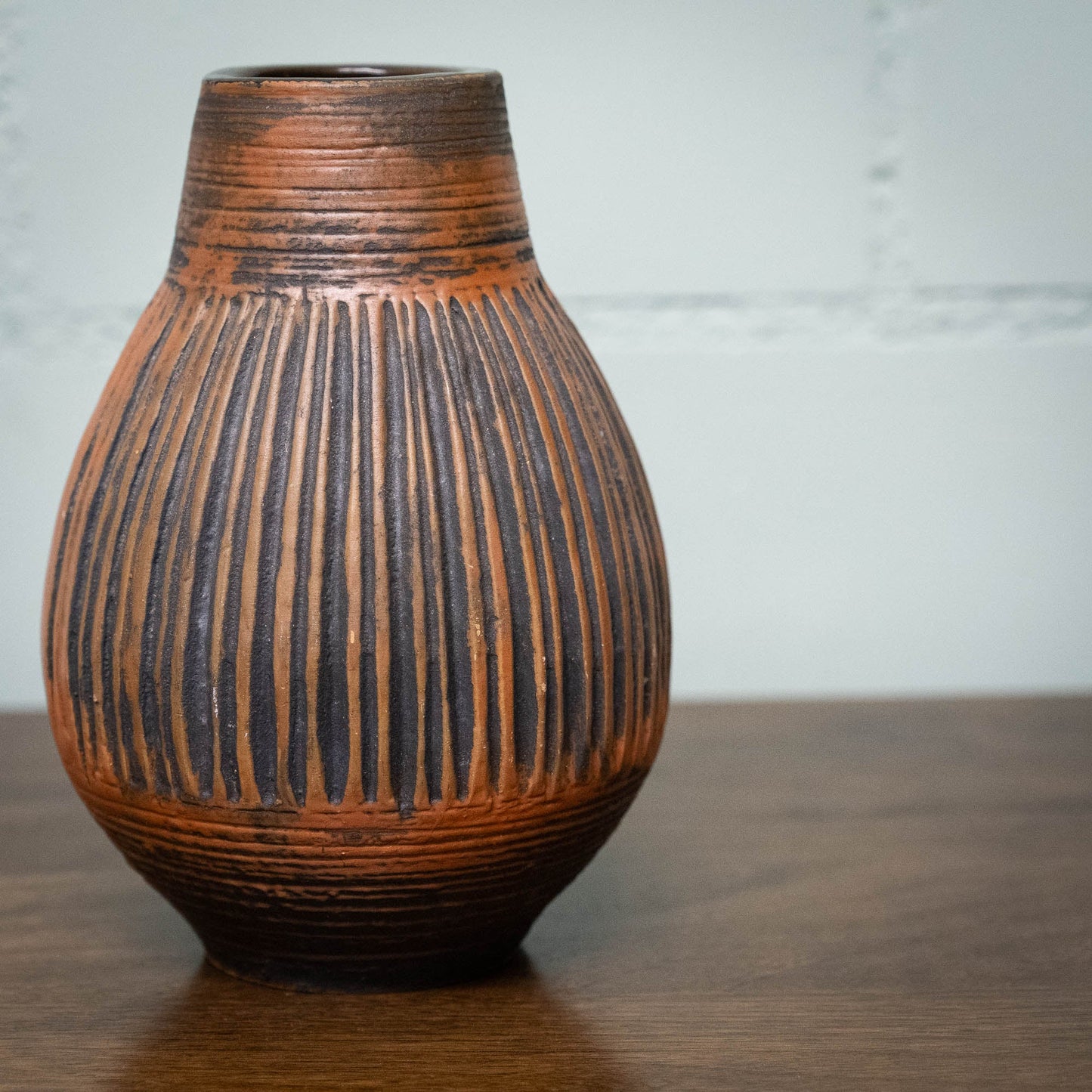
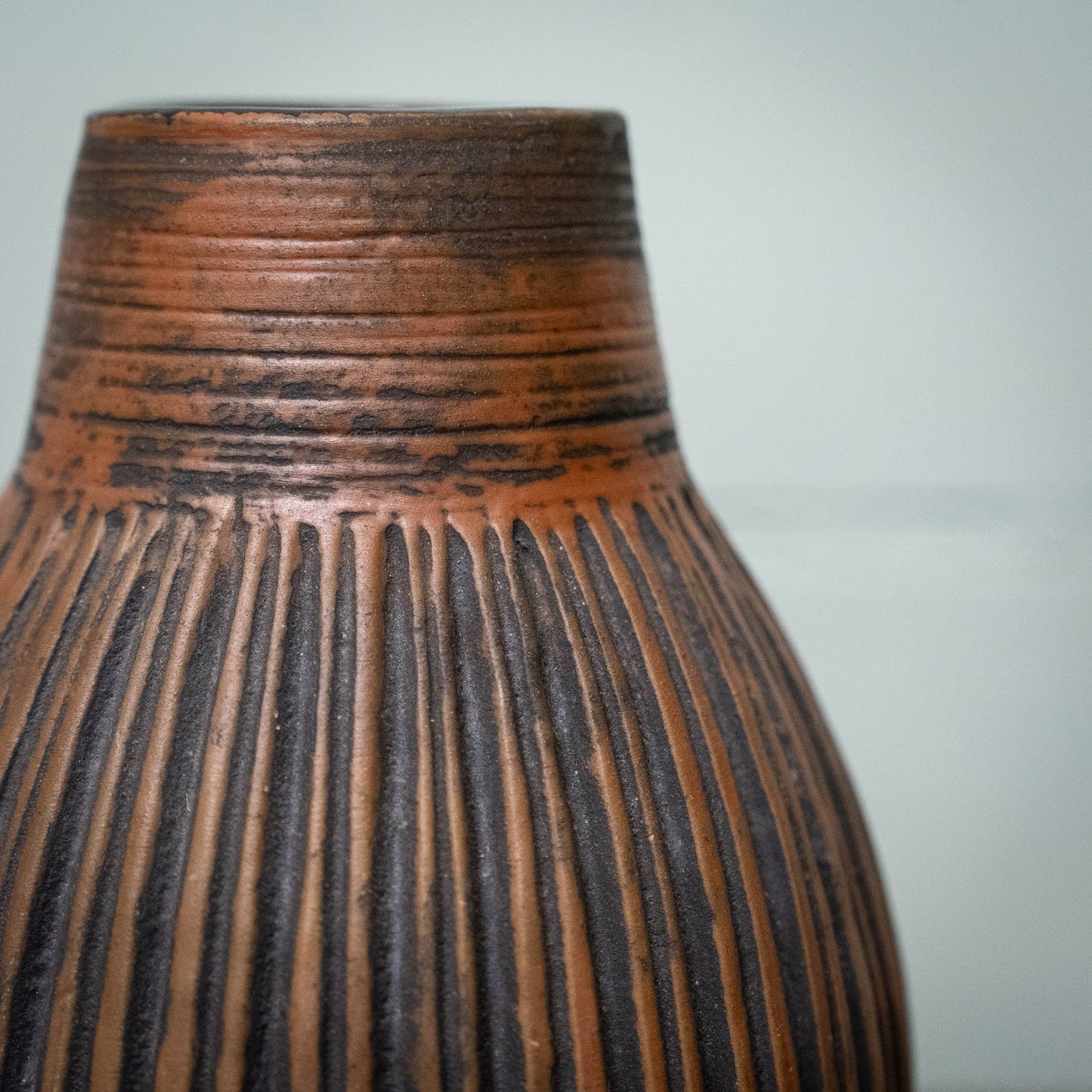
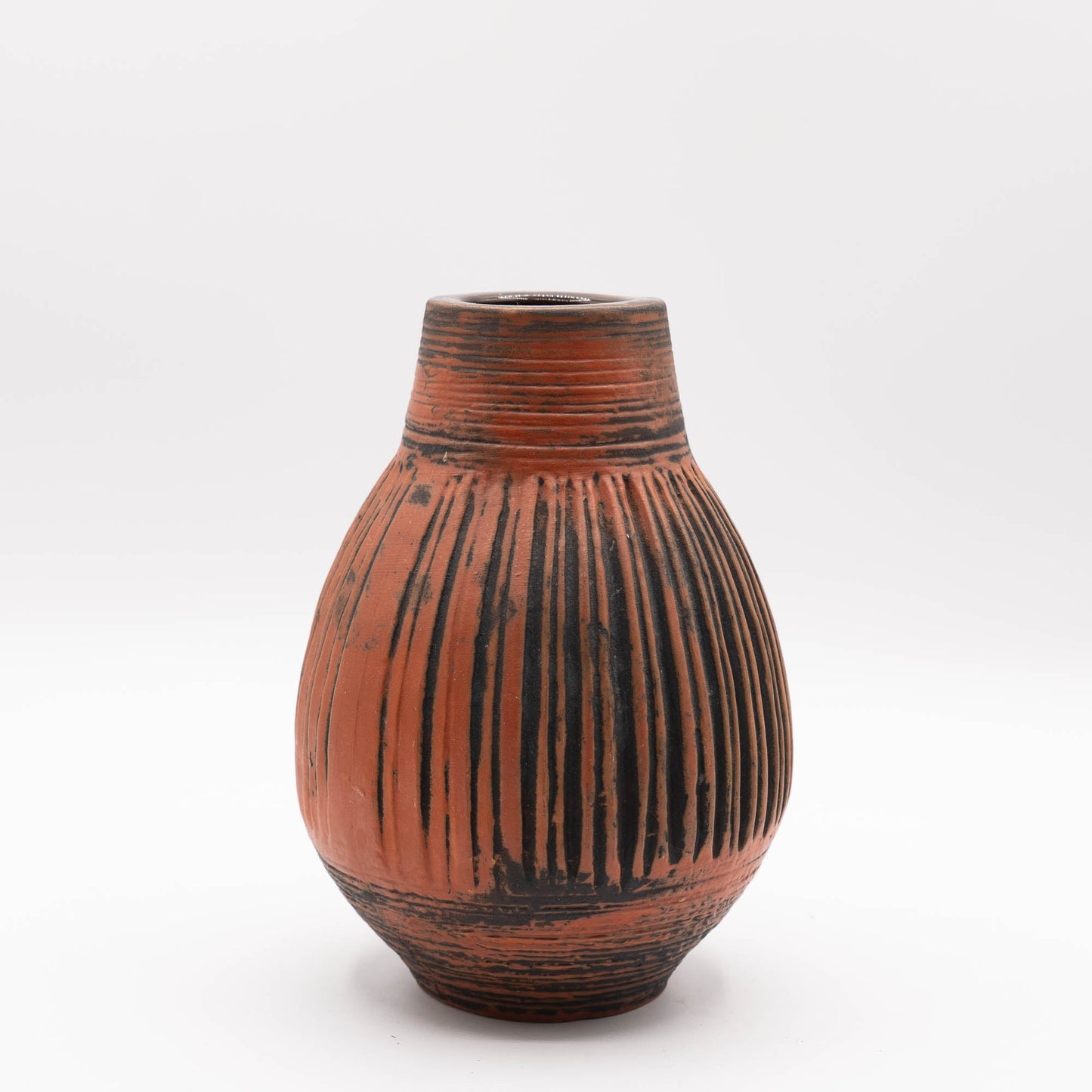
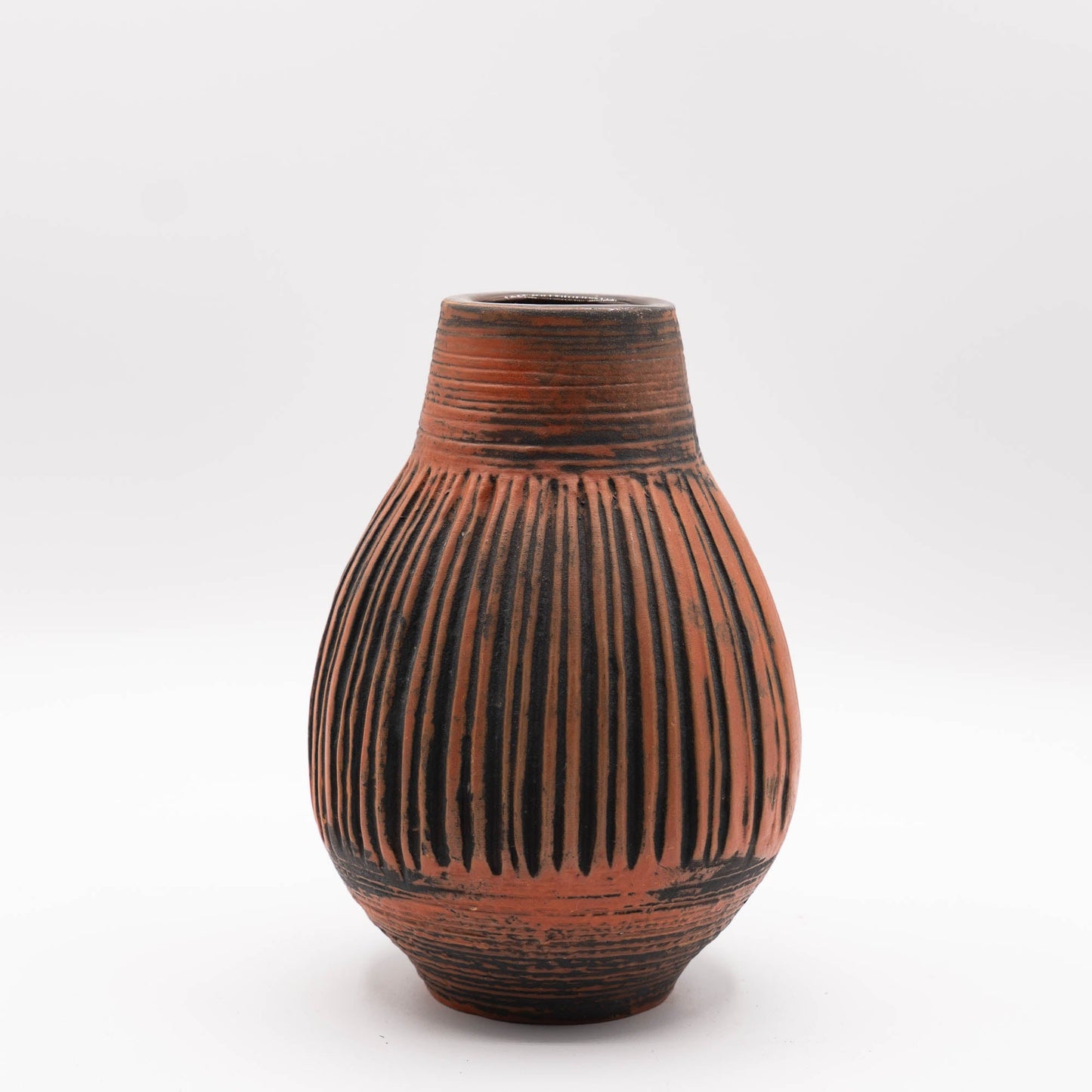
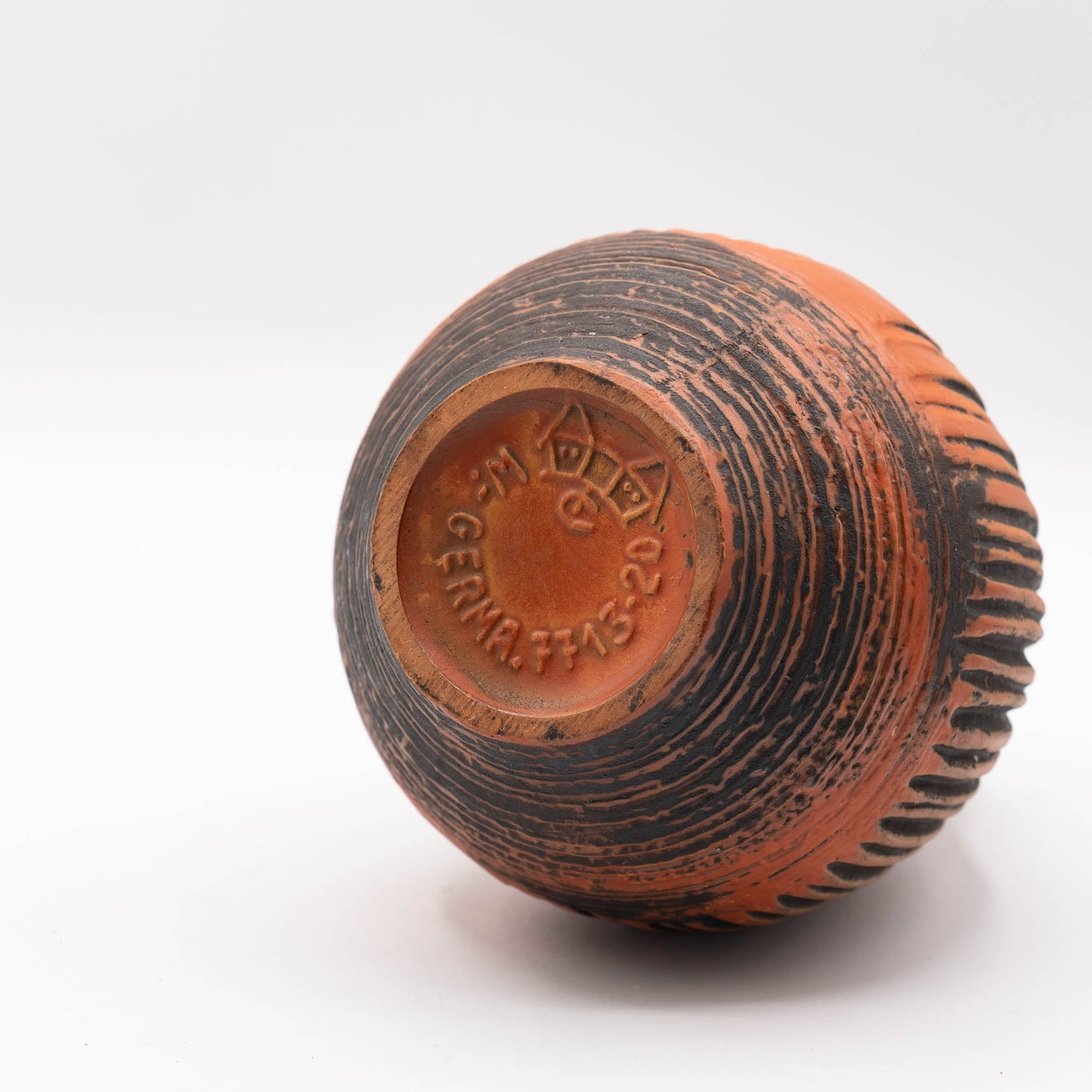
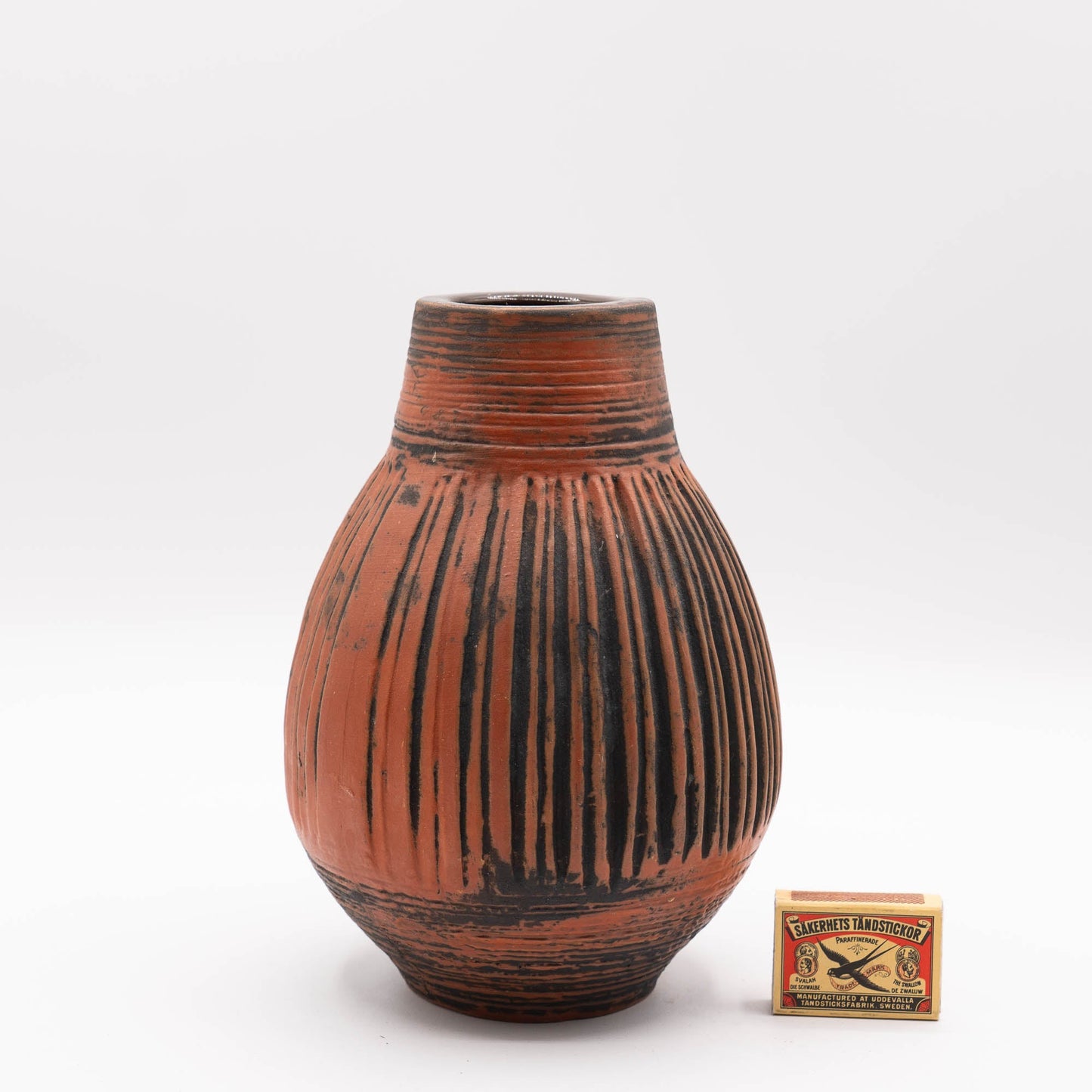
Origin & Maker
Carstens Tönnieshof was a well-known German pottery company, established in the mid-20th century and primarily associated with West German ceramics. The company was founded by Christian Heinrich Carstens and initially operated under the name "Carstens-Uffrecht." However, it wasn't until the post-war period, around the 1950s and 1960s, that Carstens Tönnieshof truly rose to prominence, producing a wide range of decorative ceramics that have become iconic pieces in mid-century design.
The company’s work is often characterised by bold, experimental forms, vibrant glazes, and unique, textured finishes. Many of their pieces, like other West German ceramics of the time, fall under the "Fat Lava" style, which became incredibly popular during the 1960s and 1970s. These designs often featured thick, volcanic-like glazes, with rich colour palettes and rugged surfaces, giving the pieces a distinctive and dramatic appearance.
Carstens Tönnieshof produced a variety of items, from vases to decorative tableware, and was renowned for their innovative use of form and glaze, often pushing the boundaries of conventional ceramic design. Today, Carstens' work is highly collectible, and their pieces remain a hallmark of mid-century modern German pottery, valued for both their aesthetic appeal and craftsmanship.
Blog posts
View all-

A Serendipitous Morning at the Rue de Bretagne ...
There are few joys in life that match the thrill of stumbling upon a hidden treasure, and for me, flea markets hold that magical allure. One of my favourite flea...
A Serendipitous Morning at the Rue de Bretagne ...
There are few joys in life that match the thrill of stumbling upon a hidden treasure, and for me, flea markets hold that magical allure. One of my favourite flea...
-

Emile Bourgeois and "Le Grand Dépôt" in Paris
Recently, I found this stunning Sarreguemines wash set. It was at the Brocante in Belfort, France. On this day, we had got up at 4 AM to be there in...
Emile Bourgeois and "Le Grand Dépôt" in Paris
Recently, I found this stunning Sarreguemines wash set. It was at the Brocante in Belfort, France. On this day, we had got up at 4 AM to be there in...
-

The Legacy of Robert Haviland: A Journey from N...
The story of Robert Haviland porcelain is one of artistry, transatlantic ambition, and enduring heritage. It begins in the mid-19th century when David Haviland, an enterprising New Yorker, founded Haviland...
The Legacy of Robert Haviland: A Journey from N...
The story of Robert Haviland porcelain is one of artistry, transatlantic ambition, and enduring heritage. It begins in the mid-19th century when David Haviland, an enterprising New Yorker, founded Haviland...











